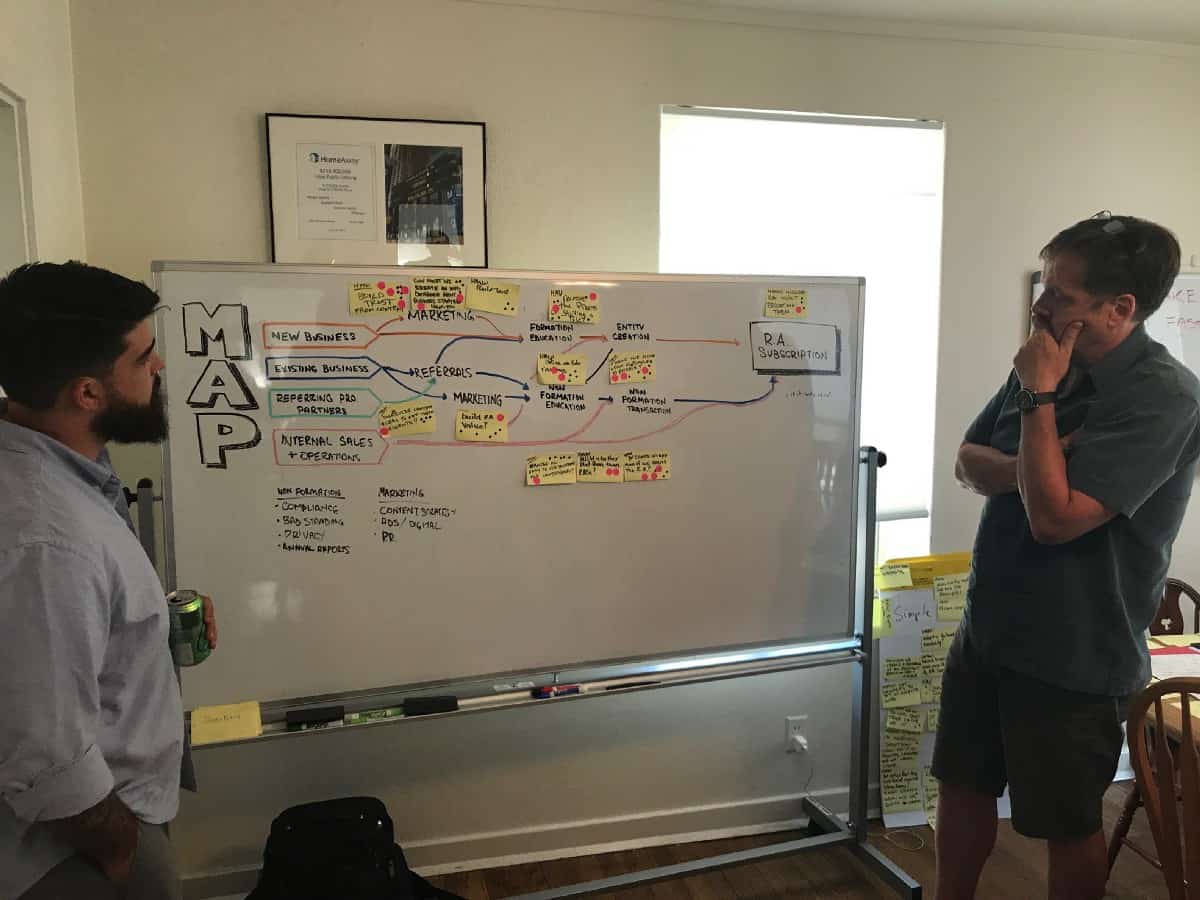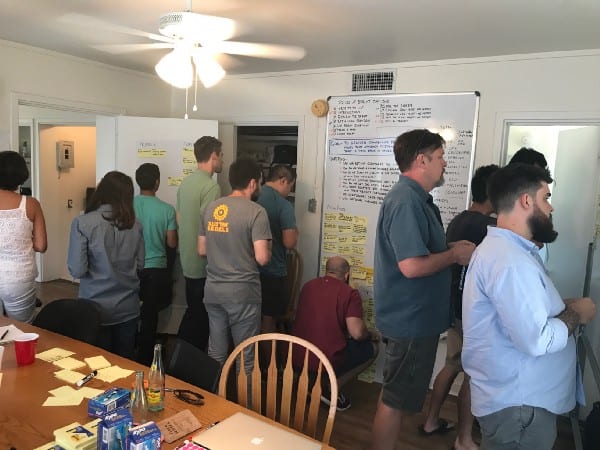
A few months ago, I started my new company, ZenBusiness. I founded it with the belief that insights from our potential customers would be absolutely fundamental to business decisions. For this reason, I became interested in the methodologies behind the Design Sprint process, as made famous by the folks at Google Ventures. I did my research, read the book Sprint by Jake Knapp and then asked around for advice on hosting my first Sprint.
I serendipitously ran into Voltage Control’s Douglas Ferguson as a part of my regular networking “rounds” in Austin and we started chatting about what he’s learned from facilitating Sprints for numerous start-ups. From reading Knapp’s book, I knew that it would be important to have an experienced facilitator for our first Sprint, so I asked Douglas to help. He also recommended a fantastic designer as his co-facilitator; together they made an amazing combo and covered everything in terms of brain power—from marketing and branding expertise to deep knowledge of software and user experience.

Here’s a few of my top learnings from our first Design Sprint with Douglas:
- The process helps you identify the right question to answer. One of the first things we did in our Sprint was map out the customer journey and every key touchpoint. It’s a deceptively simple task, but putting this flow into a visual form allowed the team to really hone in on which question we should answer through our Sprint. As a new company, it can be overwhelming to know where to focus our energy. We decided that we would spend our time looking at the initial customer sign-up experience because it would give us the most “bang for our buck.” Being new to the market, our most pressing problem is, naturally, the top of the funnel and acquiring first-time customers.


2. An outside facilitator allows the team to focus on outcomes, not “doing it right.” One of the benefits of doing a Design Sprint is that all of our critical team members were together in one room, focused on solutions, not just talking. With Douglas leading us through the process, our team was free to work on the tasks at hand—fleshing out our targeted customer segment, building a prototype and testing it with real customers. Douglas gave us the structure and leadership we needed to fully engage in the process. With his help, we had no worries about doing it right; we only had to worry about getting our ideas right for our customers.



3. We learned enough to lead ourselves next time. ZenBusiness’ first Sprint was a great success.The basic assumptions we tested —Does anyone want to buy our product? Do we have a market?—were answered with an overwhelming “yes.” At the end of the week, Douglas left us with some very actionable product changes to make. The cherry on top was that we had learned the Sprint process enough to give it a shot ourselves next time. Soon, we’re embarking on our second Design Sprint and, this time, we are comfortable facilitating ourselves. It is a testament to Douglas’ guidance and leadership: the students can now take care of themselves.
My parting advice is this: Don’t think twice about using an expert to help with your first Design Sprint. It will undoubtedly save you time, money, and by the end, your team will have learned this transformative process so you can lead yourselves in, and into, the future.
Don’t think twice about using an expert to help with your first Design Sprint


